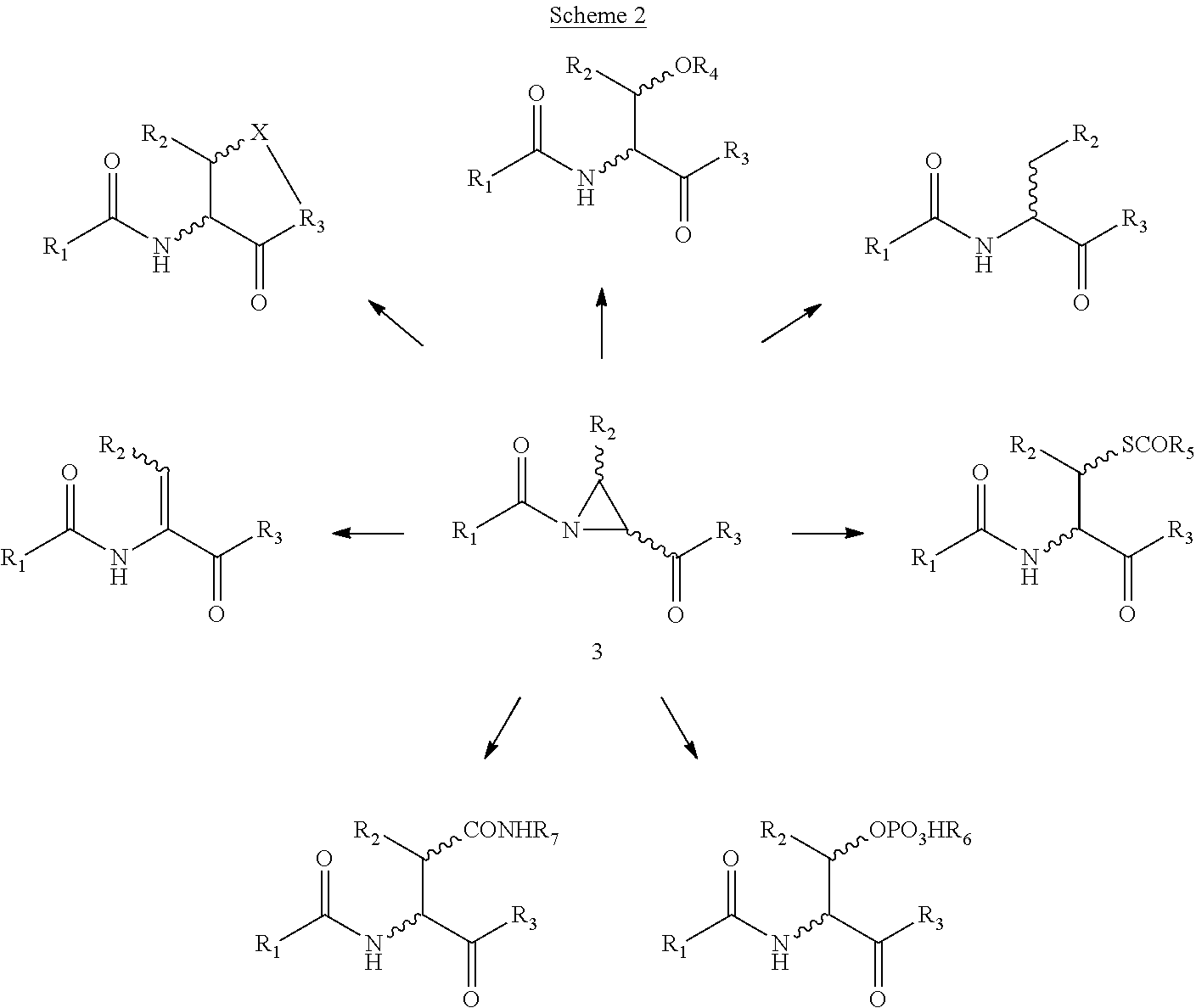Versatile native chemical ligation technologies
a native chemical and ligation technology, applied in the field of ncl-based strategies, can solve the problems of lack of generality and coupling efficiency, inability to incorporate post-translationally modified or unnatural amino acids at the ligation site, and limited ncl-based strategies
- Summary
- Abstract
- Description
- Claims
- Application Information
AI Technical Summary
Benefits of technology
Problems solved by technology
Method used
Image
Examples
example 1
REFERENCES FOR BACKGROUND AND EXAMPLE 1
[0063](1) Reviews: a) Tam, J. P.; Xu, J.; Eom, K. D. Biopolymers (Peptide Sci.) 2001, 60, 194-205; b) Nilsson, B. L.; Soellner, M. B.; Raines, R. T. Annu. Rev. Biophys. Biomol. Struct. 2005, 34, 91-118; c) Hackenberger, C. P. R.; Schwarzer, D. Angew. Chem. Int. Ed. 2008, 47, 10030-10074; d) Kent, S. B. H. Chem. Soc. Rev. 2009, 38, 338-351.
[0064](2) Efforts to overcome this requirement include: a) Tam, J. P.; Yu, Q. Biopolymers 1998, 46, 319-327; b) Offer, J.; Boddy, C. N. C.; Dawson, P. E. J. Am. Chem. Soc. 2002, 124, 4642-4646; c) Wu, B.; Chen, J.; Warren, J. D.; Chen, G.; Hua, Z.; Danishefsky, S. J. Angew. Chem. Int. Ed. 2006, 45, 4116-4125; d) Botti, P.; Tchertchian, S. WO / 2006 / 133962; e) Crich, D.; Banerjee, A. J. Am. Chem. Soc. 2007, 129, 10064-10065; f) Payne, R. J.; Fichet, S.; Greenberg, W. A.; Wong, C.-H. Angew. Chem. Int. Ed. 2008, 47, 4411-4415; g) Okamoto, R.; Kajihara, Y. Angew. Chem. Int. Ed. 2008, 47, 5402-5406; h) Haase, C.; Roh...
example 2
REFERENCES AND NOTES FOR BACKGROUND AND EXAMPLE 2
[0183](1) Dwek, R. A. Chem. Rev. 1996, 96, 683.
[0184](2) Gamblin, D. P.; Scanlan, E. M.; Davis, B. G. Chem. Rev. 2009, 109, 131.
[0185](3) (a) Lauc, G.; Zoldos, V. Medical Hypotheses 2009, 73, 510. (b) Lauc, G.; Zoldos, V. Molecular Biosystems 2010, 6, 2373.
[0186](4) Kannagi, R.; Yin, J.; Miyazaki, K.; Izawa, M. Biochim. Biophyc. Acta 2008, 1780, 525.
[0187](5) Rich, J. R.; Withers, S. G. Nature Chemical Biology 2009, 5, 206.
[0188](6) Kent, S. B. H. Chem. Soc. Rev., 2009, 38, 338.
[0189](7) Piontek, C.; Ring, P.; Harjes, O.; Heinlein, C.; Mezzato, S.; Lombana, N.; Pohner, C.; Püttner, M.; Silva, D. V.; Martin, A.; Schmidt, F. X.; Unverzagt, C. Angew. Chem. Int. Ed. 2009, 48, 1936; Piontek, C.; Silva, D. V.; Heinlein, C.; Pöhner, C.; Mezzato, S.; Ring, P.; Martin, A.; Schmidt, F. X.; Unverzagt, C. Angew. Chem. Int. Ed. 2009, 48, 1941. (b) Aussedat, B.; Fasching, B.; Johnston, E.; Sane, N.; Nagorny, P.; Danishefsky, S. J. J. Am. Chem. Soc....
PUM
| Property | Measurement | Unit |
|---|---|---|
| pKa | aaaaa | aaaaa |
| temperature | aaaaa | aaaaa |
| temperature | aaaaa | aaaaa |
Abstract
Description
Claims
Application Information
 Login to View More
Login to View More - R&D
- Intellectual Property
- Life Sciences
- Materials
- Tech Scout
- Unparalleled Data Quality
- Higher Quality Content
- 60% Fewer Hallucinations
Browse by: Latest US Patents, China's latest patents, Technical Efficacy Thesaurus, Application Domain, Technology Topic, Popular Technical Reports.
© 2025 PatSnap. All rights reserved.Legal|Privacy policy|Modern Slavery Act Transparency Statement|Sitemap|About US| Contact US: help@patsnap.com



